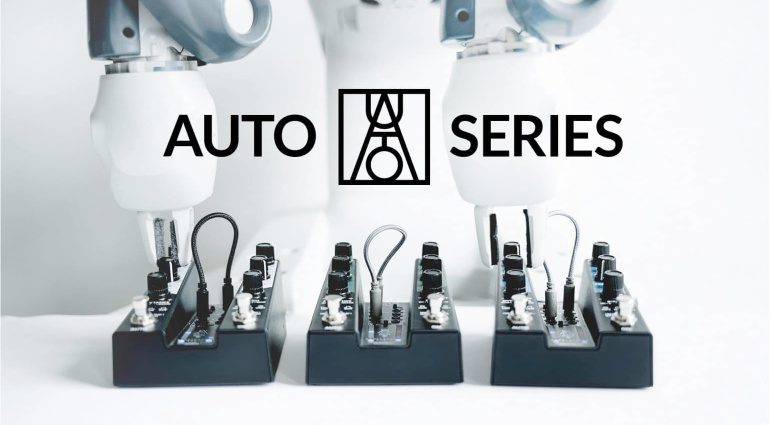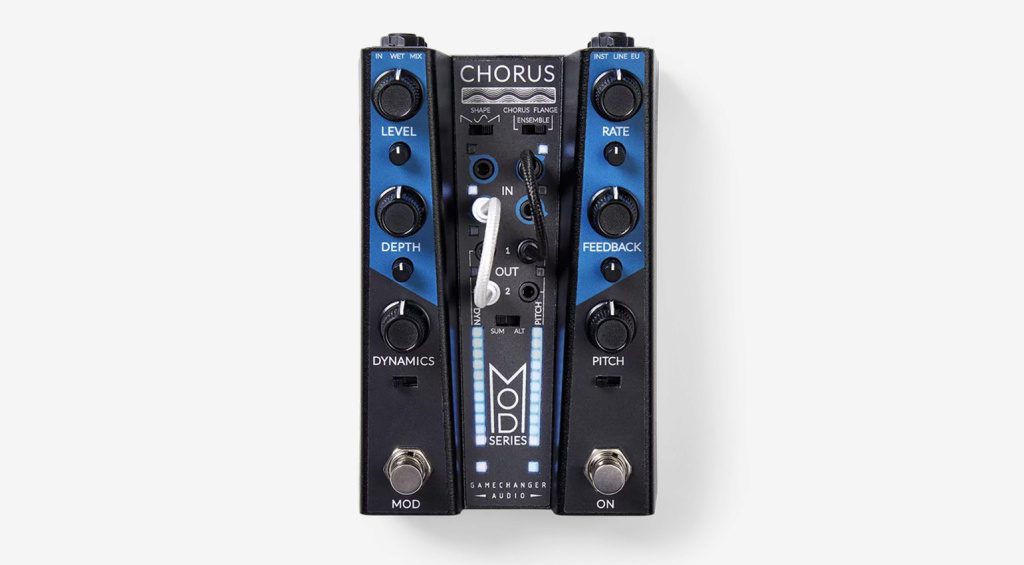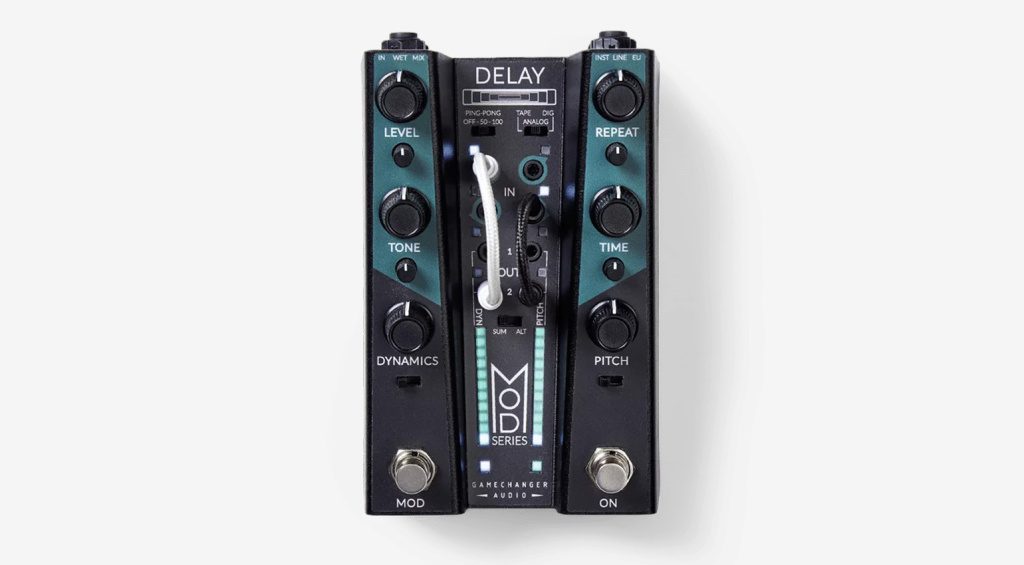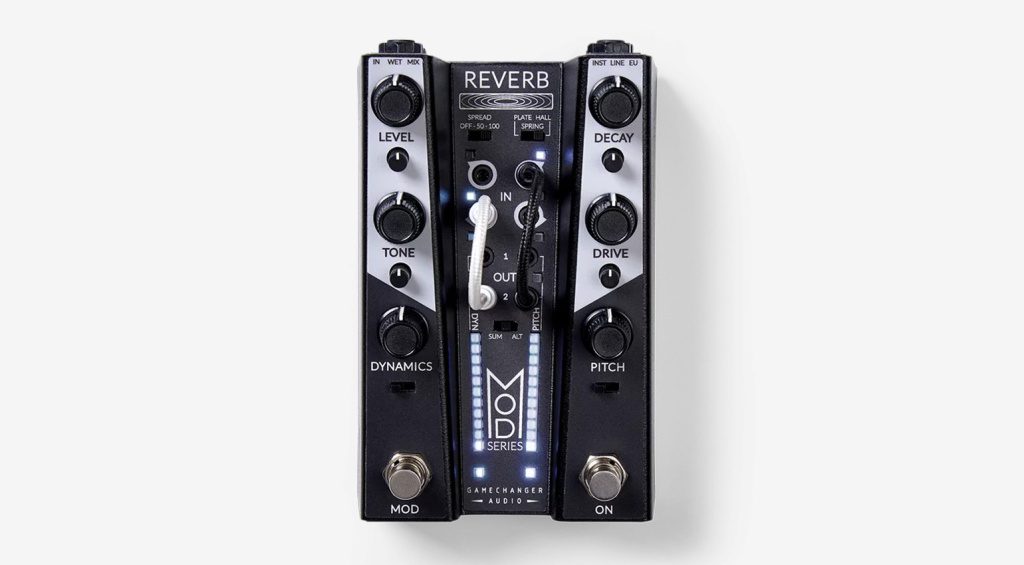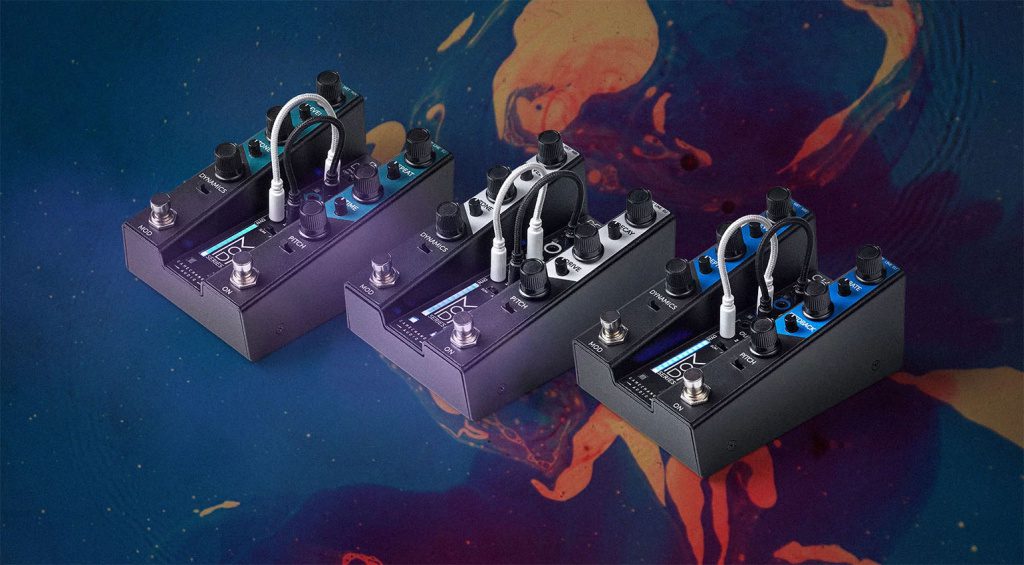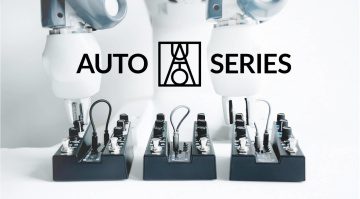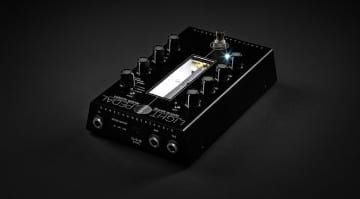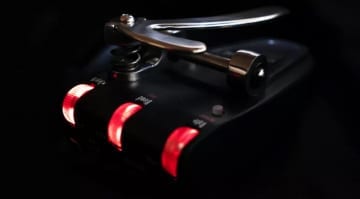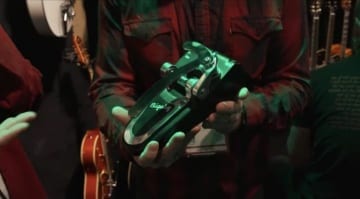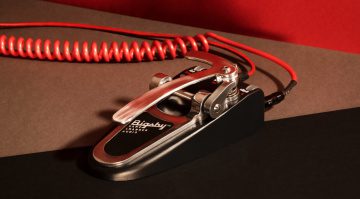Gamechanger Auto Series: 3 Patchable Pedals for Modular Footwork
[August 6, 2024] After a few minor tweaks and a final round of development, the three pedals of the Gamechanger Audio Auto Series are now available! Auto Chorus, Auto Delay, and Auto Reverb offer some pretty cool modulation options.
What was originally known as the MOD Series has now been rebranded as the Gamechanger Auto Series – everything else remains the same. Still, three effects pedals for guitarists and synth heads alike with rather unusual modulation options that offer some extremely creative sound design endeavors.
Besides changing the name, Gamechanger Audio have also announced availability and prices. Like their exceptional synthesizers, the three pedals in the Gamechanger AUTO series are available exclusively from Gamechanger’s website. Each pedal costs €272 (approximately $296 / 234 GBP) excluding VAT, with free shipping via UPS.
[January 22, 2024]The Gamechanger Auto series Chorus, Delay, and Reverb pedals have modular-style patch points for innovative modulation routing and cross-patching potential. Is patching with your feet a bit fiddly?
Gamechanger Auto Series
These are remarkable-looking pedals, but then we’ve come to expect interesting and dramatic design choices from Gamechanger Audio. The basic idea is that you take your common and garden pedal effects and give them the opportunity to rewire, repatch and reinvent themselves on the front panel.
How it works is that each pedal has a pair of modulation sources. But these are not internal LFOs or triggered envelopes; these are stripped from the audio source. One modulation source, called Dynamics, pulls its shape from the volume of the input. It’s essentially an envelope follower that rides the shape of your playing.
The other modulation source in the Gamechanger Auto Series is called Pitch and generates voltage in response to note-tracking, bends and vibrato. You can then use these voltage generators to control any of the four effect parameters. Both Dynamics and Pitch have two outputs so you can plug every hole on the pedal if you wish.
The MOD Pedals
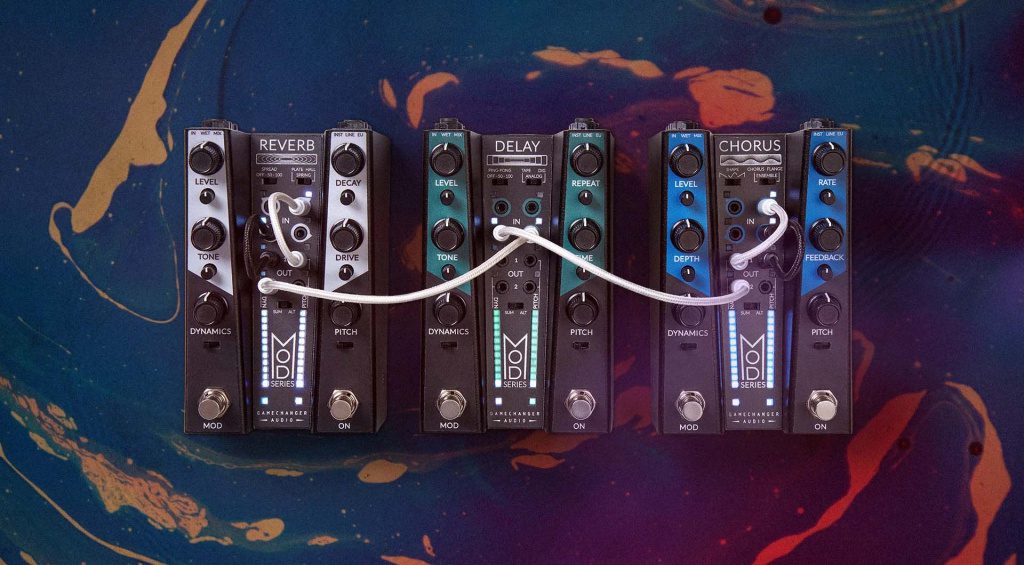
I like the design of the Gamechanger Auto Series pedals. The recess in the middle I imagine is there to give a bit of room for the patch cables so you don’t end up crunching them with your boots. I also appreciate the “Mod” foot switch which means you can switch the patched modulation in and out without bypassing the effect.
The pedals follow the same format with Mod and Bypass switches, three algorithms, four controls and the Dynamics/Pitch patchbay. On the back of the Gamechanger Auto series, the inputs and outputs are stereo, but more interestingly, the input level is switchable between guitar, line and Eurorack levels. These are definitely not just for guitar.
There’s also a Track Input that will route an alternative signal to the Dynamics and Pitch controls. So the modulation section doesn’t have to be anything to do with your source; you could plug anything into it to generate the modulation. You can track that source back out again as well. There’s a MIDI/Clock input and USB for updates. Power appears to be from a regular 9V pedal supply.
On the MOD Chorus you have chorus, ensemble and flanger effects with control over level, depth, rate and feedback. You also get three modulation shapes which is a nice touch. For the MOD Delay you have tape, analogue BBD and digital options; level, time, feedback and tone controls, and there’s a switch for some ping-pong panning options. The MOD Reverb has plate, spring and hall, with control over level, decay, tone and drive and some degree of stereo spread.
Modulate
The website suggests some uses of the modulation section. You could, for instance, create a ducking delay by wiring the Dynamics into the wet/dry mix, or patch the Pitch into the level and set the centre pitch high so that delays only happen further up the neck. You could create a gated reverb or an inverted one by applying negative modulation from Dynamics to volume. Or on the Chorus, you could route Pitch to rate and Dynamics to depth to get some serious flagging going on.
You could, of course, cross-modulate from one pedal to another, although at the moment, I’m not entirely sure why you’d need to. I guess as the effects would be chained, then the source would be different post-effect for each subsequent pedal, and you might want to use the original. Or all three pedals could have different Track Input sources, and you might want to share those to different places. The more you think about it, the more the possibilities open up around them, so yeah, cross modulation is awesome!
Feet Patching
Gamechanger Audio know that these are going to appeal to far more than guitarists, or at least to people who do more than play guitar. The ease with which you could integrate them into a modular synthesizer set-up is very intriguing. You could run all the modulation from your Eurorack and have it move epically on your guitar sound. You could drop the guitar and have them work on all sorts of other signals. Alternatively, make the guitar the source and start modulating your Eurorack with the three envelope followers and pitch-tracking circuits.
I do wonder a bit about how well the Dynamics and Pitch sections work once you’ve chained the pedals together. Trying to pitch-track a wobbly chorus or something steeped in reverb might be challenging, but on the other hand, using a delay to continuously push other parameters could get very interesting.

 4,7 / 5,0 |
4,7 / 5,0 | 